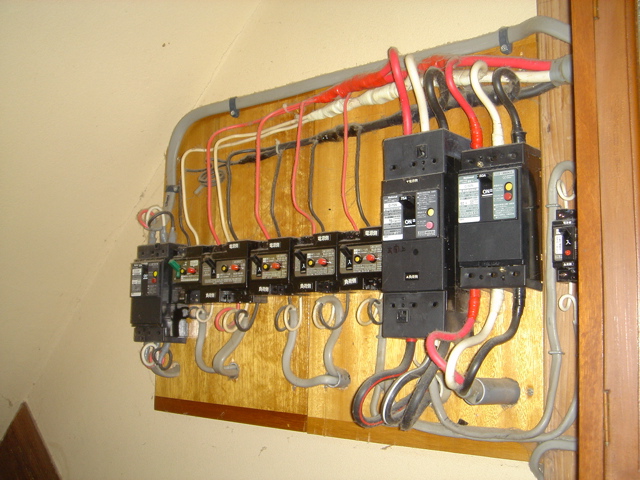When you buy an older home, there’s a certain charm that comes with the property’s history. However, along with this charm can come outdated electrical systems, such as knob and tube electrical wiring. Installed primarily in homes built between the 1880s and the 1940s, knob and tube wiring was once the standard for electrical installation. Today, however, it’s considered outdated, potentially unsafe, and not up to modern electrical code standards.
At Langstaff & Sloan Inc., we specialize in diagnosing and replacing knob and tube electrical systems. Whether you’re a homeowner or looking to invest in a property, understanding the implications of knob and tube wiring is essential for safety and long-term peace of mind.
In this blog, we’ll walk you through everything you need to know about knob and tube electrical systems, the risks involved, and how our expert services can help you upgrade to a safer, more reliable electrical setup.
What is Knob and Tube Electrical Wiring?
Knob and tube wiring was the first standard method of wiring electrical systems in North American homes. It was primarily used between the late 19th century and the 1940s before being phased out by modern electrical systems. Here are the key features of knob and tube wiring:
- Porcelain Knobs: Knobs are small porcelain supports that secure the electrical wires to beams or joists. These prevent the wires from making contact with wooden surfaces, helping to minimize the risk of fire.
- Porcelain Tubes: Tubes, also made of porcelain, are used where the wiring passes through walls or floor joists to protect it from potential friction or damage.
- Single Wires: Unlike modern electrical systems that use bundled wires with both hot and neutral wires in a single sheath, knob and tube wiring uses single hot and neutral wires.
- No Grounding Wire: One of the most significant drawbacks of knob and tube wiring is the lack of a grounding wire. This means that the system lacks the safety mechanism that modern electrical systems rely on to divert excess electrical current to the ground, reducing the risk of electric shock.
While it served its purpose in the early days of electricity, this system is now considered obsolete and unsafe for today’s modern electrical needs.
Why Is Knob and Tube Wiring a Concern?
Although knob and tube wiring was a groundbreaking technology at the time, it comes with a range of risks for homeowners today. Here are some of the major concerns:
1. Lack of Grounding
Modern electrical systems are equipped with a ground wire, which ensures that if something goes wrong (like a short circuit or a malfunctioning appliance), the excess electricity is safely directed away. Knob and tube wiring doesn’t have this safety feature, leaving your home vulnerable to electrical shocks and fires.
2. Aging Insulation
The rubber insulation used in knob and tube wiring deteriorates over time. As the rubber becomes brittle and cracked, the wires become exposed, increasing the risk of electrical arcing and fires. The system was designed to last a few decades, but the insulation has now outlived its usefulness in many homes.
3. Overloading Circuits
Knob and tube wiring was designed for a time when homes used far fewer electrical devices. Today’s homes, filled with modern appliances, electronics, and lighting, often exceed the capacity of these old systems. Overloading can cause overheating, and with the lack of a ground wire, the results can be catastrophic.
4. Insurance Complications
Many insurance companies are hesitant to provide coverage for homes with knob and tube wiring. In some cases, policies may be canceled or premiums significantly increased, especially if the wiring is deemed unsafe. Replacing the wiring may be necessary for ensuring that your home remains covered.
5. Code Compliance Issues
Knob and tube wiring doesn’t meet the current electrical codes set by most municipalities. If you’re planning to sell your home or if local authorities inspect the property, you may be required to upgrade the wiring to meet modern standards. Failure to comply with these codes could result in fines or the inability to sell the property.
How to Identify Knob and Tube Wiring
If you live in an older home, it’s important to determine whether or not you have knob and tube wiring. Here’s how you can identify it:
- Porcelain Knobs: These are often visible where wires are attached to wooden beams or joists in attics, basements, or walls.
- Porcelain Tubes: If the wires pass through a wall or floor, they will likely go through porcelain tubes. These tubes are typically found in unfinished spaces such as basements, attics, or crawl spaces.
- Single, Exposed Wires: Knob and tube wiring uses single copper wires, which can be seen running along beams or walls, often with no protective covering except for the porcelain components.
If you’re unsure whether your home has knob and tube wiring, Langstaff & Sloan Inc. offers professional inspections and can help assess the condition of your electrical system.
The Risks of Keeping Knob and Tube Wiring
While knob and tube wiring may still function in some homes, it is important to understand the risks of keeping it in place:
- Increased Fire Risk: The brittle insulation and the lack of grounding increase the likelihood of an electrical fire, which can cause significant damage or even loss of life.
- Electrical Failures: Overloading the system can cause circuit breakers to trip, power outages, or even permanent damage to your appliances.
- Costly Repairs: Ignoring faulty or outdated wiring can result in higher repair costs down the road, as well as damage to your home’s electrical system.
- Home Sale Complications: Homes with knob and tube wiring may face difficulties when selling, especially if the wiring is not updated to meet modern safety standards.
Replacing Knob and Tube Electrical Wiring
If you have knob and tube wiring in your home, it’s crucial to consider replacing it with modern, safer alternatives. Here’s why upgrading is essential:
1. Increased Safety
Replacing knob and tube wiring with modern wiring systems provides grounding, updated insulation, and more efficient circuits. This reduces the risk of electrical fires, electrical shock, and power surges.
2. Better Energy Efficiency
Modern wiring is designed to handle the electrical demands of today’s appliances and gadgets. It’s better equipped to handle the load of a modern home, improving overall energy efficiency and reducing the risk of circuit overload.
3. Improved Insurance Options
Most insurance companies prefer homes with updated electrical systems, and replacing your knob and tube wiring will help ensure that you can find the right coverage at the best rates.
4. Compliance with Codes
Upgrading your electrical system ensures that your home complies with local codes, which is especially important if you plan to sell the property in the future.
Why Choose Langstaff & Sloan Inc.?
At Langstaff & Sloan Inc., we have years of experience working with knob and tube electrical systems. Our team of licensed electricians specializes in:
- Inspection and Assessment: We provide detailed inspections to assess the condition of your wiring and determine whether it needs replacement.
- Wiring Replacement: If your home has knob and tube wiring, we can replace it with modern wiring that meets safety standards and improves energy efficiency.
- Code Compliance: We ensure that your new electrical system complies with the latest electrical codes to guarantee your home’s safety and value.
Don’t wait until it’s too late—contact Langstaff & Sloan Inc. today to schedule an inspection or upgrade your electrical system. We’ll help you ensure your home is safe, secure, and up to code.


